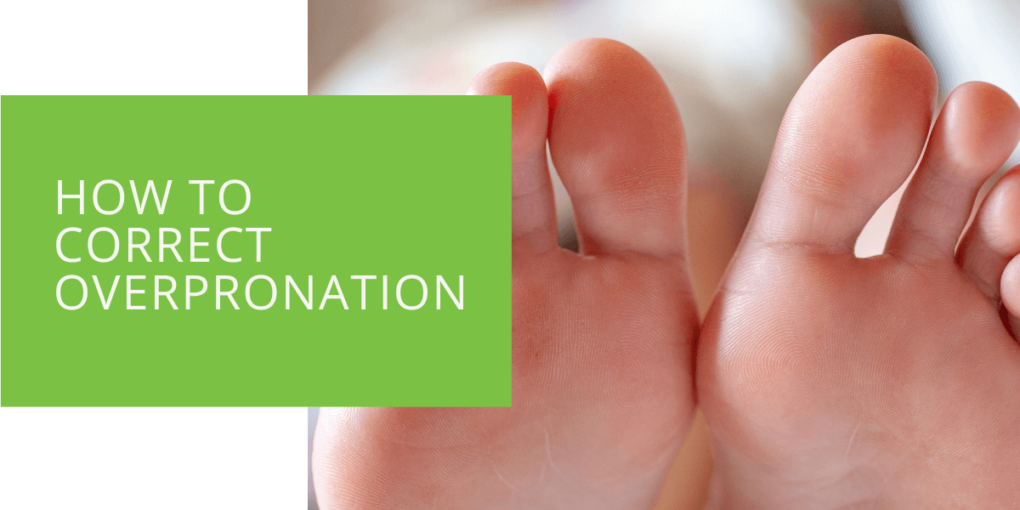How to Correct Overpronation
Overpronation is a common foot problem when the foot rolls inward excessively while walking or running. This can cause several foot and ankle problems, such as plantar fasciitis, flat feet, and Achilles tendonitis. Fortunately, there are several ways to correct overpronation and alleviate these issues. This article will explore the causes and symptoms of overpronation, how to assess your pronation type, and the various treatment options available.
What is Overpronation?
Overpronation occurs when the foot rolls inward excessively while walking or running. This causes the arches of your feet to flatten and the foot to roll inward. This can lead to several foot and ankle problems, such as plantar fasciitis, flat feet, and Achilles tendonitis.
Assessing Your Pronation Type
Assessing your pronation type is essential in choosing the right treatment for overpronation. Here are some ways to assess your pronation type:
The Wet Foot Test
The wet foot test involves standing in the water and then stepping onto a surface showing your footprints. If your footprint shows the entire sole of your foot, then you have flat feet and are an overpronator. This test is a quick and easy way to determine if you have flat feet and overpronation.
Gait Analysis
A gait analysis involves observing your walking or running stride to assess the mechanics of your foot and ankle. A podiatrist or a physical therapist can do this. A gait analysis can provide valuable information about your foot and ankle mechanics, such as the degree of pronation and how your foot rolls inward.
Biomechanical Assessment
A biomechanical assessment is a more comprehensive evaluation of your foot and ankle mechanics. This assessment includes a gait analysis and an assessment of the range of motion of your joints and muscles. This assessment can help identify any underlying issues contributing to your overpronation, such as weak muscles or imbalances in your foot and ankle.
Footwear Wear Patterns
Assessing the wear patterns on your shoes can also provide valuable information about your pronation type. Overpronators tend to wear down the inside edge of their shoes faster than the outside edge. Look at the soles of your shoes and check for any excessive wear on the inside edge.
Foot and Ankle Range of Motion
Assessing the range of motion of your foot and ankle can also provide valuable information about your pronation type. Overpronators tend to have limited ankle dorsiflexion, which is the ability to bend your ankle upward. This can be assessed by performing a calf stretch and noting the degree of flexibility in your ankle.
Big Toe Mobility
Limited mobility of the big toe can also contribute to overpronation. Overpronators tend to have limited mobility of the big toe, which can affect the mechanics of your foot and ankle. This can be assessed by performing a big toe stretch and noting the degree of mobility in your big toe.

Correcting Overpronation
Overpronation can cause foot and ankle problems such as plantar fasciitis, flat feet, and Achilles tendonitis. Fortunately, there are several ways to correct overpronation and alleviate these issues. Here are some effective treatment options:
Proper Footwear and Orthotics
One of the most effective ways to correct overpronation is wearing proper footwear and orthotics. Supportive shoes with a firm midsole and good arch support can help correct your gait and prevent excessive inward rolling of your foot. Look for shoes with a wide toe box and good shock absorption.
Orthotics, such as insoles or arch supports, can also provide additional support and correct your foot mechanics. They are designed to reduce the inward rolling of your foot and provide cushioning to your arch and heel. Custom-made orthotics can provide a more tailored fit and are recommended for severe cases of overpronation.
Stretching and Strengthening Exercises
Stretching and strengthening exercises can also help correct overpronation. Exercises that strengthen the muscles in your feet and ankles, such as heel raises and toe curls, can help improve the mechanics of your foot and ankle. Strengthening your foot muscles can help provide better support to your arches and prevent excessive inward rolling of your foot.
Stretching exercises, such as calf and plantar fascia stretches, can help improve flexibility and reduce tightness in your foot and ankle. Tightness in the calf muscles can contribute to overpronation, so stretching these muscles can help improve the mechanics of your foot and ankle.
Manual Therapy and Massage
Manual therapy and massage can also help correct overpronation. Techniques such as trigger point therapy and myofascial release can help release tension in your muscles and ligaments, improving the mechanics of your foot and ankle. Massaging the bottom of your foot can also help stimulate blood flow and promote healing.
Gait Retraining and Modification
Gait retraining and modification can also help correct overpronation. This involves modifying your gait pattern by changing how you walk or run. Techniques such as taping and bracing can help prevent excessive inward rolling of your foot, while modifications to your stride can help improve the mechanics of your foot and ankle.
Surgery
Surgery is a last resort option for severe cases of overpronation that do not respond to other treatments. Surgical correction can involve realigning your foot and ankle bones or tightening the ligaments to reduce excessive pronation.
Conclusion
Overpronation can cause foot and ankle problems such as plantar fasciitis, flat feet, and Achilles tendonitis. Fortunately, there are several ways to correct overpronation and alleviate these issues. By wearing proper footwear and orthotics, stretching and strengthening exercises, getting manual therapy and massage, and modifying your gait, you can correct your foot mechanics and prevent further foot and ankle problems. If you are experiencing foot pain or discomfort, it is important to seek professional medical attention to prevent further damage and ensure a full recovery.

